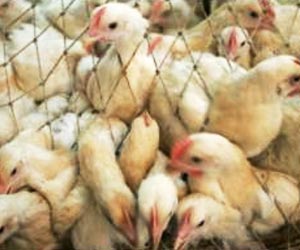Researchers in Hong Kong and China have identified the deadly H5N1 virus in geese, ducks and healthy chickens in the wet markets of Southern China, sparking fears of bird flu pandemic.
Researchers in Hong Kong and China have identified the deadly H5N1 virus in geese, ducks and healthy chickens in the wet markets of Southern China, sparking fears of bird flu pandemic.
It has been known that waterfowl represents natural hosts of the bird flu virus. This however is the first time that large-scale asymptomatic bird flu infection has been detected among seemingly healthy chickens. Infected chickens usually die within 24 hours of the infection.The research team headed by Guan Yi, Microbiologist, University of Hong Kong, analyzed the faecal and other samples obtained from healthy birds in poultry markets, located in Southern China, from January 2004 to June 2005. Surprisingly, 1.8% of ducks, 1.9% of geese, 0.26% of chickens and 0.46% of pheasants and quail were found to harbor the H5N1 virus.
'This means out of every 100 birds in wet markets, one is positive and infected with the virus. They look healthy but they can infect others and they can kill people,' said Guan Yi, the study author.
This finding highlights that the potentially dangerous infection may be prevalent among more people than previously thought. This would make the detection of asymptomatic bird flu infection, more difficult. The results of this study can be found in the February issue of Proceedings of the National Academy of Sciences.
So far, 10-bird flu related mortalities have been reported in China. Most of these cases have occurred in places where H5N1 outbreaks had not been reported, posing doubts about these isolated bird flu cases. Following this trend, it was postulated that healthy looking, yet infected chickens could transmit the virus. This has indeed turned out to be true.
Although China has been involved in mass vaccination of poultry, ever since the virus was isolated in Guangdong province in 1996 (Southern China), the situation has not improved. Perhaps the fact that China houses the world's biggest population of chickens, can be given as an excuse for ineffective bird flu control measures.
Advertisement





